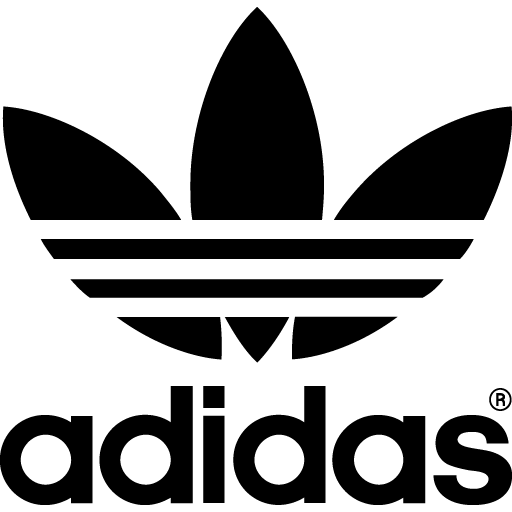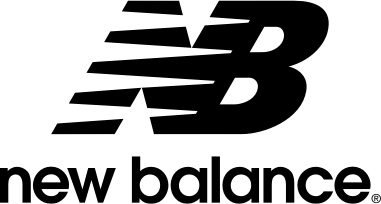Bookkeeping
Direct Fixed Costs Definition
Content
In a survey of nearly 200 senior marketing managers, 60 percent responded that they found the “variable and fixed costs” metric very useful. These costs affect each other and are both extremely important to entrepreneurs. A company’s net profit is affected by changes in sales volumes. That’s because as the number of sales increases, so too does the variable costs it incurs.
Depreciation – the gradual deduction of an asset’s decline in value. A physical asset is gradually expensed over time down to a value of $0. Many businesses use borrowed funds, in which case, they are subject to interest. Represents a recurring charged incurred when you rent space from a landlord. This is a static and routine cost related to an insurance contract. This is easy to overlook because it can be challenging to predict, but make sure to account for regular maintenance to tools, equipment and buildings. If you require any permitting with the state, those costs should be applied here.
- Total fixed cost does not change regardless of production or lack of production.
- Businesses with high fixed costs were more likely to have to make difficult decisions about continuing to pay rent and salaries.
- Not only did SIB remove these unused services to save us money going forward, but they also successfully obtained credits for our past billing for the dead phone line.
- The proportion of fixed versus variable costs that a company incurs and its allocations can depend on its industry.
This charge does not change even if the business decides to store more or fewer products, keeping in mind the storage and capacity limits. If a company makes zero sales for a period of time, then total variable costs will also be zero.
What are fixed costs?
Earn your share while providing your clients with a solid service. Financial Institutions Integrate our services with yours to solidify your place as a trusted advisor for your commercial banking customers. The COGM is then transferred to the finished goods inventory account and used in calculating the Cost of Goods Sold on the income statement. Adam Hayes, Ph.D., CFA, is a financial writer with 15+ years Wall Street experience as a derivatives trader. Besides his extensive derivative trading expertise, Adam is an expert in economics and behavioral finance.
Having a finger on the pulse of your business metrics will be crucial to happily serving your customers for years to come. Let’s take a closer look at the company’s costs depending on its level of production. A Fixed Cost is independent of output and its dollar amount remains constant irrespective of a company’s production volume. Fixed costs may include lease and rental payments, insurance, and interest payments. Fixed costs can be direct or indirect and may influence profitability at different points on the income statement. They may also include reasonable, incremental meal, accommodation and travel expenses. But it’s also important to understand that increasing production can also help you lower your costs, resulting in even greater profits.
What Is Fixed Cost?
Fixed costs are reliable, and accountants should be able to easily distinguish them from variable costs for this reason. When making production-related decisions, should managers consider fixed costs? Generally speaking, variable costs are more relevant to production decisions than fixed costs.
- Variable costs are commonly designated as the cost of goods sold, whereas fixed costs are not usually included in COGS.
- There are many techniques for making your business more profitable.
- The commission is the variable part – and the more you sell, the more you pay.
- Assume this business pays $5,000 per month for the warehouse space needed to manage its inventory and leases two forklifts for $800 a month each.
- To do that, you’ll need to know how to make the best decisions about where, when, and how you can lower your total costs.
If the company produces 500 units, its variable cost will be $1,000. However, if the company doesn’t produce any units, it won’t have any variable costs for producing the mugs.
Differences between total cost, fixed cost and variable cost
They saved us tens of thousands of dollars in just this one spend area. The SIB team has helped 98% of our clients reduce indirect expenses without changing your vendors or operations. This is the method of charging an expense of a non-tangible asset, gradually, throughout the life of an asset. Amortized costs are paid off at the end of the asset’s useful life.
What is fixed cost per unit?
The fixed cost per unit is the total fixed costs of a company divided by the total number of units produced.
Adam received his master’s in economics from The New School for Social Research and his Ph.D. from the University of Wisconsin-Madison in sociology. He is a CFA charterholder as well as holding FINRA Series 7, 55 & 63 licenses. He currently researches and teaches economic sociology and the social studies of finance at the Hebrew University in Jerusalem. Approved costs means the eligible costs or expenditures2 as approved by the Provider, and as defined in the Agreement or Decision on Grant Funding to carry out the Grant Project.
USI Insurance Services
To do that, you’ll need to know how to make the best decisions about where, when, and how you can lower your total costs. So for industries with high fixed costs, it is cheaper and more efficient for fewer competitors to supply the goods and services. The cost of one individual aircraft can come in as much as $300 million.
A manufacturing firm—like a high-end furniture maker, for instance—will also have substantial fixed costs. They’ll need commercial space, both for fabrication and storage.
Companies create a depreciation expense schedule for asset investments with values falling over time. For example, a company might buy machinery for a manufacturing assembly line that is expensed over time using depreciation. Another primary fixed, indirect cost is salaries for management. Total https://www.bookstime.com/s remain constant and spread over a larger number of units, thus per-unit fixed costs decrease.
Brodersen Management Corp.
Contracted salaries relate to the annual salary of a business’s employees. Once contracted, this counts as a monthly and annual fixed cost. The employee may be busy and produce 10 times the normal output, or, they may be extremely unproductive and produce half. No matter how productive the employee is, the cost remains fixed. By contrast over-time hours, or incentive based pay counts as a variable cost, as this varies month on month and increases with output.
That is a huge expense, particularly if the airliners only fill up half the plane. In turn, these high fixed costs can dissuade potential competitors from entering the market. SIB conducted a detailed audit of our fixed costs and presented us with their findings and savings recommendations as they became available… We were impressed by SIB’s meticulous process, and the breadth of their recommendations was remarkable, involving savings in no fewer than eight different spending categories. SIB reviewed a wide variety of services and expense areas for the company, and found multiple savings opportunities, most of which added up to thousands of dollars in monthly savings. SIB’s work reducing our bank fees in particular has been extremely lucrative for Tacala.
It also tries to help local businesses by charging the vendors a fixed cost that is lower than other standard rates for events and spaces. Assume this business pays $5,000 per month for the warehouse space needed to manage its inventory and leases two forklifts for $800 a month each. It might not be fun, but calculating your fixed costs on a regular basis will benefit your business in the long run.
Instead, management usually sets fixed costs at predetermined rates based on company necessities. Some examples of fixed costs include rent, insurance, and property taxes. All of these expenses are completely independent from production volume. Average fixed costs are the total fixed costs paid by a company, divided by the number of units of product the company is currently making.
The rest ($400) would be recorded on the balance sheet as part of the inventory for the period. The truth is that revenue is not the same as profit, and businesses don’t start to make a profit with the first item they sell. They often have to do a lot of business just to cover their Fixed Costs.
Independent cost structure analysis helps a company fully understand its fixed and variable costs and how they affect different parts of the business as well as the total business overall. Many companies have cost analysts dedicated solely to monitoring and analyzing the fixed and variable costs of a business.
Furthermore, insurance prices do not react to incremental increases in production as a variable cost does. In other words, production may increase by 10, but it has no impact on insurance prices as a fixed cost. On the other hand, even though your variable costs rise with sales volume increases, your unit costs may decline.
…another group, the second, covers fixed cost (accountants’ “overhead costs”), which includes items not easily varied. A restaurant owner will need a brick-and-mortar space in order to do business, so rent and insurance will be among their most notable fixed costs. Even if they opt for a delivery-only model, they still have to prepare food in a commercial kitchen that meets all health and safety standards. A traditional restaurant will also need seating space, furniture, and access to parking or public transportation. Location will be a major factor in what type of clientele the restaurant can attract and how expensive the rent will be.
- Instead, management usually sets fixed costs at predetermined rates based on company necessities.
- A physical asset is gradually expensed over time down to a value of $0.
- One way is to simply tally all of your fixed costs, add them up, and you have your total fixed costs.
- If your specialty cake sales are booming, you can buy ingredients in bulk from your suppliers and negotiate lower per-unit costs.
- In this guide, we’ll talk about fixed costs and how you can calculate them.
Ultimately, what we will continue to enjoy are the savings found. It was obvious they left nothing out as every opportunity was found.
MGC Insurance Defense
This means that variable costs increase as production rises and decrease as production falls. Some of the most common types of variable costs include labor, utility expenses, commissions, and raw materials.
Understanding your fixed costs can help you price your products and remain profitable. Fixed cost is an essential part of accurate profit projections for every business, regardless of its size. As such, it is included in the calculation of cost of goods sold. These costs for some businesses—for example, manufacturing companies—will be much more substantial than those for other businesses. Examples of this could include, sole proprietorships doing independent consulting.
The owner took out a business loan some years ago to buy equipment and she regularly pays interest on the balance. She is also required by her state to pay for a Pet Grooming Facility License on an annual basis. The break-even point is the required output level for a company’s sales to equal its total costs, i.e. the inflection point where a company turns a profit. In economics, there is a fixed cost for a factory in the short run, and the fixed cost is immutable. But in the long run, there are only variable costs, because they control all factors of production. A fixed cost is a cost that does not change with an increase or decrease in the amount of goods or services produced or sold. A variable cost is an expense that changes in proportion to production or sales volume.
So, how many brushes will you need to sell per month to be profitable? If there’s a downturn in business after the holidays, for example, you won’t bring in as much profit. But you also won’t be spending as much money on ingredients, packaging, or seasonal employees. This means that there is a cost of $200,000 per unit, per business, per year.




